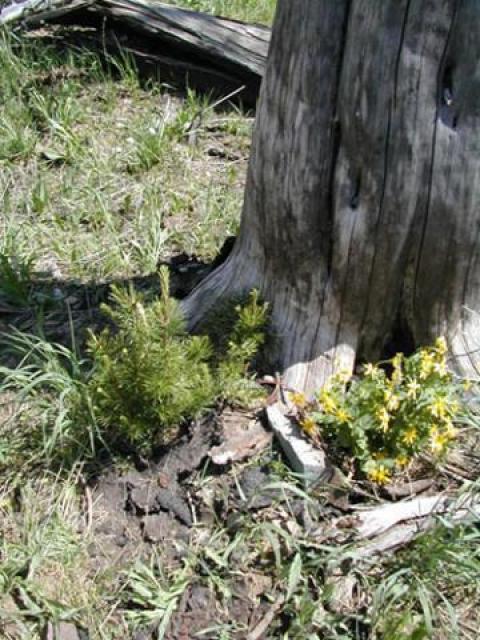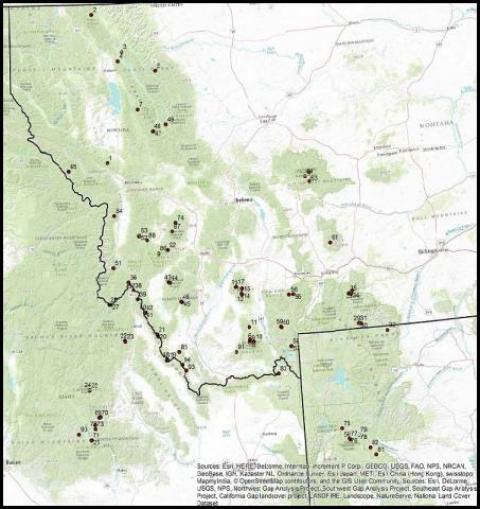Documenting trends in growth, regeneration, and mortality of whitebark pine: a climate perspective
Upper subalpine whitebark pine forests are rapidly declining throughout western North America because of the interacting and cumulative effects of historical and current mountain pine beetle outbreaks, fire exclusion policies, and white pine blister rust. Mitigation of these effects through active restoration and management is being attempted. However, many feel that projected warmer future climates will severely reduce whitebark pine high-elevation habitat, restricting the population to the tops of mountains or north of the U.S./Canada border. Very few researchers have studied the effects of rapidly changing climate on whitebark pine ecology. There are few studies documenting how whitebark pine has responded to the past two decades of warmer, drier conditions. It is speculated, and modeling studies support, that climate change could “push” whitebark pine “off the top of the mountain” by moving its lower elevation limit above the tallest peaks. However, recent modeling efforts have shown that whitebark pine might be maintained provided that stand-replacing fires predicted during the next 50 years provide a large, competition-free area in which to grow. Whitebark pine also has other advantages – high genetic diversity, moderate to high adaptability, and demonstrated resistance to blister rust. These competitive advantages must be considered when predicting the future of whitebark pine. This study was designed to gather the field data necessary to document changes in growth, regeneration, and mortality of whitebark pine and its associates in the upper subalpine fir forests of the U.S. northern Rocky Mountains.
92 stands were located throughout Montana, Idaho and Wyoming. At each stand, a 1/10th acre plot sampling design was implemented and data collected following FIREMON protocol. At each plot, increment cores were extracted from 2-3 mature whitebark pine and taken back to the lab where they underwent standard dendrochronological processing. Ring widths were measured using CooRecorder and analysis performed using a suite of R-packages to investigate growth changes over time as well as compare annual ring width growth to PRISM climate data, both monthly and annual. Regeneration was also sampled for species density at each site, and seedling and sapling cores were cross-dated for establishment dates. Mortality was recorded at each plot by species and decay class. Plot data collected was plotted spatially as well as examined against many of the biophysical plot descriptors such as aspect and elevation.
- Diameter growth data from the mature whitebark pine did not show an overall change over the 100 years sampled.
- The monthly climate variables with the highest correlations to diameter growth are becoming warmer and drier.
- Whitebark pine seedling and sapling density and establishment data from this study showed that within these stands there is continuing regeneration.
- In stands that do not have current mortality from mountain pine beetle or white pine blister rust, there are higher mortality rates among other conifer species than whitebark pine.

